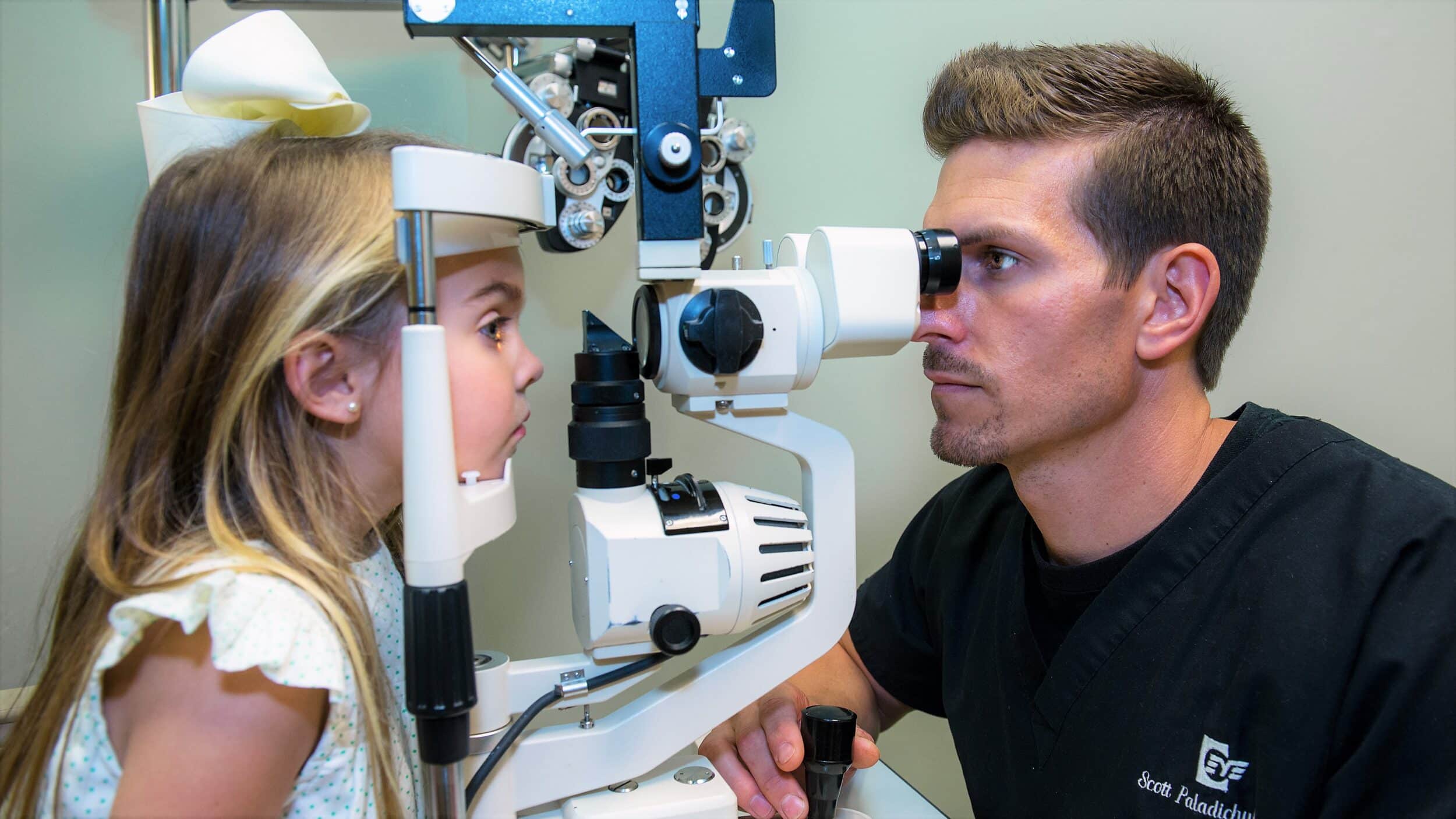
Parents often hear health complaints from their kids, and most of the time it’s nothing for which to be overly concerned. A little TLC and perhaps some over-the-counter medication, and the “tummy ache” soon goes away.
But what if your child tells you about recurring headaches and their sight being a little blurry—while you also notice they may have red or watery eyes? In that case, a trip to the eye doctor for a complete examination would be a wise move.
“While the root cause for those types of symptoms might be simple eye strain, it could also indicate a more serious issue,” says Dr. Scott Paladichuk, an optometrist with Hattiesburg Eye Clinic who specializes in comprehensive eye care for the family including pediatrics. “It’s always a good idea to have children’s eyes checked with these kinds of symptoms.”
More likely, such an exam will confirm what is now the most common eye strain among children: long stretches of time spent on digital devices like smartphones, tablets or laptops. Indeed, many eye care professionals believe the rise they’ve seen in recent years for digital eye strain among children has been a consequence of the COVID-19 school shutdowns.
“Remote learning depends a lot on digital devices—kids on Zoom calls with teachers, or doing their school work via the Internet,” says Dr. Paladichuk. “The increase in ‘screen time’ during the shutdown period seemed to correlate with the increase many physicians saw of eye strain complaints among pediatric patients.”
Since digital devices are likely here to stay, it’s important that everyone—especially children—manage the quantity and quality of their digital screen time. Dr. Paladichuk recommends the following digital viewing practices to avoid eye strain.
Follow the 20-20-20 rule. This helpful mnemonic is a formula for reducing eye strain: For every 20 minutes of screen time, a person should look away from the screen and at an object 20 feet away for 20 seconds. It’s often a good idea to set a timer for children to let them know when to take a break.
Keep screens at arm’s length. The most comfortable digital screen distance is about 18 to 24 inches (or arms’ length for tablets or monitors) from the eyes. It’s also better to position the viewing screen around eye level.
Adjust background lighting. It’s more stressful on the eyes to view a bright digital screen in a dark room. For that reason, make sure there’s sufficient ambient lighting to offset the screen brightness, with the light source preferably behind the viewer and not in front or beyond the screen.
Encourage “outdoor” time. It’s easy to get absorbed in the digital world for hours on end, but this can lead to eye strain or other vision-related problems. Spending time outdoors, which relies more on distance than near vision, can ease eye strain in children and may deter development of nearsightedness.
Although digital device overuse is the most common cause for children’s eye strain, it’s not the only one. According to Dr. Paladichuk, some children have functional issues with the focusing muscles of the eye.
In addition, certain medications for attention deficit hyperactivity disorder (ADHD) or dyslexia may also interfere with the eyes’ focusing ability.
“We have a number of solutions for these kinds of eye problems, depending on the actual cause,” says Dr. Paladichuk. “Glasses with low-powered lenses can be quite helpful with some children, as well as performing exercises to strengthen the eye muscles.”
Hence the need for a complete eye exam—which, by the way, Dr. Paladichuk says isn’t the same as a school vision screening. “A school screening checks for quality of vision at near or far distances, but not for other possible eye issues. For that, a child should undergo a full eye exam with a qualified physician.”
Such an exam may indeed uncover an alternate cause for your child’s eye strain other than too much time on their devices. Even so, having your kids follow the good digital viewing habits outlined above can help ease eye strain and prevent it in the future.
For more information on children’s eye care, visit our webpage. To learn more about how Hattiesburg Eye Clinic can improve your vision health, call 601-268-5910 (or toll-free 800-624-8254) or schedule a consultation with us online.


